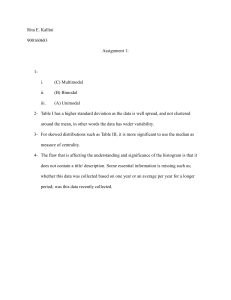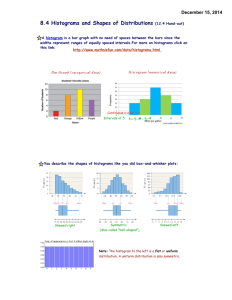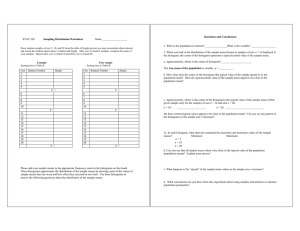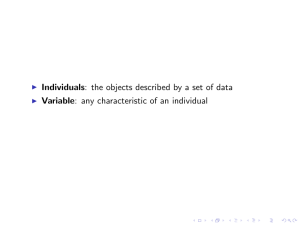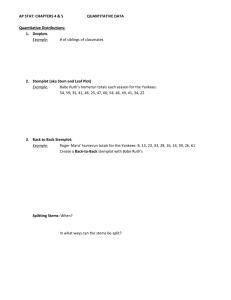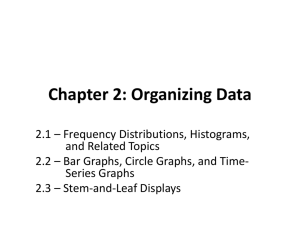Bar Charts, Frequency Distributions, and Histograms
advertisement
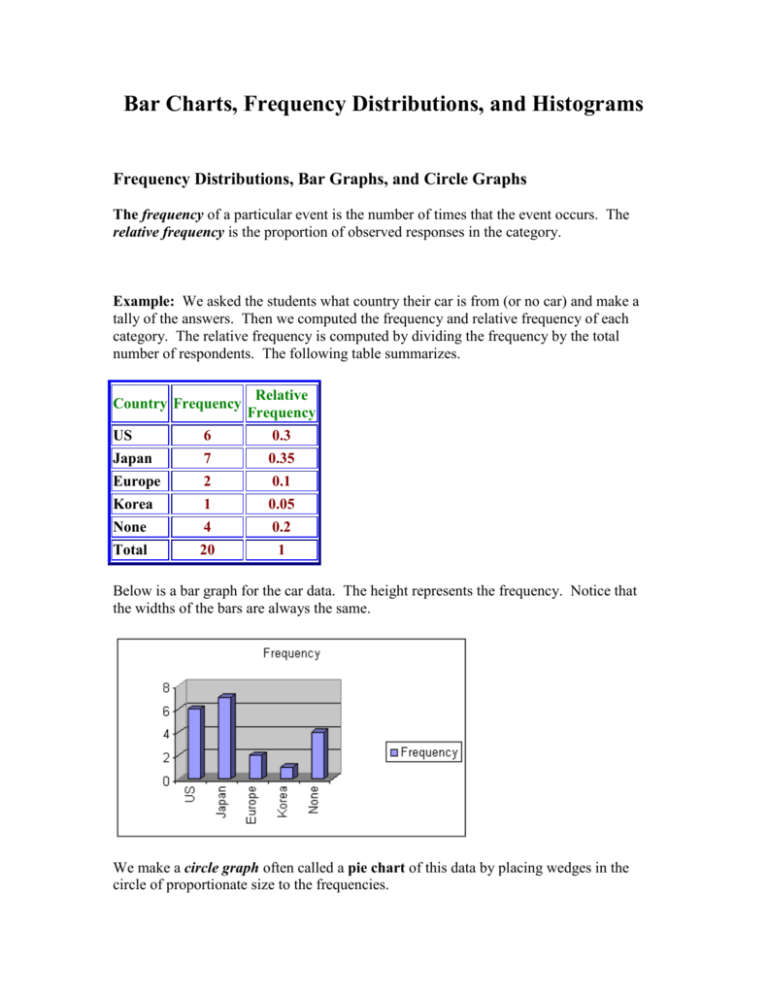
Bar Charts, Frequency Distributions, and Histograms Frequency Distributions, Bar Graphs, and Circle Graphs The frequency of a particular event is the number of times that the event occurs. The relative frequency is the proportion of observed responses in the category. Example: We asked the students what country their car is from (or no car) and make a tally of the answers. Then we computed the frequency and relative frequency of each category. The relative frequency is computed by dividing the frequency by the total number of respondents. The following table summarizes. Country Frequency Relative Frequency US 6 0.3 Japan 7 0.35 Europe 2 0.1 Korea 1 0.05 None 4 0.2 Total 20 1 Below is a bar graph for the car data. The height represents the frequency. Notice that the widths of the bars are always the same. We make a circle graph often called a pie chart of this data by placing wedges in the circle of proportionate size to the frequencies. Below is a pie chart the shows this data. Histograms Histograms are bar graphs whose vertical coordinate is the frequency count and whose horizontal coordinate corresponds to a numerical interval. Example: The depth of clarity of Lake Tahoe was measured at several different places with the results in inches as follows: 15.4, 16.7, 16.9, 17.0, 20.2, 25.3, 28.8, 29.1, 30.4, 34.5, 36.7, 39.1, 39.4, 39.6, 39.8, 40.1, 42.3, 43.5, 45.6, 45.9, 48.3, 48.5, 48.7, 49.0, 49.1, 49.3, 49.5, 50.1, 50.2, 52.3 We use a frequency distribution table with class intervals of length 5. Class Interval Frequency 15 - < 20 20 - < 25 25 - < 30 30 - < 35 35 - < 40 40 - < 45 45 - < 50 50 - < 55 Total 4 1 3 2 6 3 9 3 31 Relative Cumulative Relative Frequency Frequency 0.129 0.129 0.032 0.161 0.097 0.258 0.065 0.323 0.194 0.516 0.097 0.613 0.290 0.903 0.097 1.000 1.000 Below is the graph of the histogram The Shape of a Histogram A histogram is unimodal if there is one hump, bimodal if there are two humps and multimodal if there are many humps. A nonsymmetrical histogram is called skewed if it is not symmetric. If the upper tail is longer than the lower tail then it is positively skewed. If the upper tail is shorter than it is negatively skewed. Symmetrical Skewed Right Bimodal
